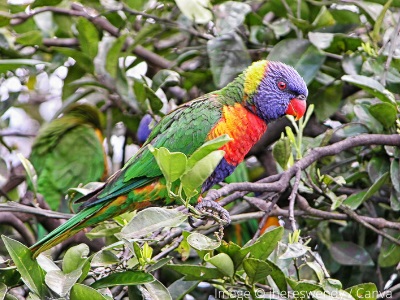Think before you cut or prune a tree — an animal may rely on that tree for food or shelter. Read our tips to help.
Do I need to remove the tree?
- If the tree is unsafe or poses a threat to people or structures, and no cost-effective remedy is possible, then remove the tree.
- Are you just taking the tree out for aesthetic reasons? Find out if the tree is native to your area and whether you have seen any wildlife using it. Just pruning the tree may make it more appealing.
How many trees should I remove?
If a tree has to go, keep the impact to a minimum. The more trees you take out, the greater the impact on wildlife. Your trees may be the entire range and habitat of an animal.
- Remove the minimum amount of vegetation.
- Cut down only one or two trees a year, if possible.
- Stagger the removal of groups of trees.
What is the best time of the year?
Food is in short supply in late autumn or winter for most animals; reptiles will be hibernating. Birds are nesting in spring and may have eggs or young in the tree you are going to fell.
- Cut down trees in mid-to-late summer or early autumn.

Rainbow lorikeet on a branch in a tree. Image © Canva NFP
How do I take the tree out safely?
Animals such as possums may be badly injured or killed when you cut down backyard trees.
- Make sure no animals are living in the tree when you cut it down. Hit the trunk with a heavy object for several days beforehand. This encourages animals to leave the tree.
- Inspect the tree before it is cut to make sure that no wildlife still lives there.
- If using a tradesperson, tell them that no animals are to be harmed during removal.
How can I replace the tree?
- Plant a selection of replacement trees, some that grow quickly and others that grow slower for longer-term use by wildlife.
- Replace shelter trees in the short term by installing nestboxes. Wildlife Queensland has details of nestbox suppliers, or follow our How to Build a Nest Box instructions to build your own.
- Plant appropriate native trees that wildlife can feed on.
